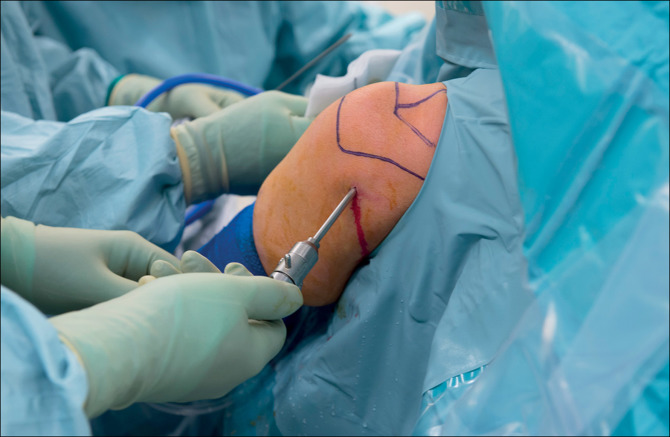Cartilage injuries can happen in a variety of different ways, but commonly it is the result of a sports injury, specifically when an individual falls or hits the knee on the ground. It can occur as a part of a meniscus or ligament injury, or a bone injury. When this type of injury happens cartilage can be damaged or break off in the knee. It causes swelling and inflammation, pain in the knee with motion, and can even cause a catching or locking sensation in the knee.
When people first hear of a cartilage transplant, many people think it may replace lost cartilage in a knee with osteoarthritis, that is not actually the case, nor the purpose of this procedure. Rather, it is most effective in young to middle-aged individuals who have sustained an injury to the knee cartilage in a non-weightbearing area – on the inside or outside part of the knee.
In the old days these injuries were many times ignored. Often times help was not available and patients lived in pain until they were old enough for a knee replacement. That is no longer the case. While cartilage restoration procedures have been around for 20 – 30 years, in the past few years, we’ve seen some improvements in the procedure that allow us to now do osteochondral (bone/cartilage) transplants to repair and restore the cartilage in the knee. A cartilage transplant can be done using either allograft tissue (tissue obtained from a donor) or it can be done using your own tissue (known as an autograft).
The entire knee is wrapped in cartilage and cartilage is like a Teflon coating on a pan – it is a smooth surface and works as a protective layer that enables smooth and pain-free movement. When this protective layer wears off or has a chip in it, things can stick and catch. A cartilage transplant can fill in a divot or chip in the cartilage and make the surface smooth again.
When a surgeon is performing a cartilage transplant, they are trying to re-create what is known as hyaline cartilage (this is the type of natural cartilage at the end of our joint). This cartilage has the correct structural properties to hold up over time and make the surface smooth. Whereas some other orthopedic procedures may give you a hyaline-like cartilage, such as a microfracture or other procedures that use artificial cartilage. Unfortunately, artificial cartilage doesn’t have the same biomechanical properties as the cartilage we were born with.

Today when we perform a cartilage transplant the surgeon can take small pieces of healthy cartilage from another part of the knee that is non-weight bearing and transplant it into an area where the cartilage is worn out or chipped. The transplanted cartilage will attach to the bone and eventually over time, it will grow into it the bone and connect to the other cartilage to create a smooth surface.
Cartilage injuries are often not seen on a traditional x-ray and an MRI is needed to evaluate the area and can determine the depth and size of the defect. Patients often first start with an injection and conservative treatment. When we have exhausted all non-operative options then we start moving to these cartilage procedures.
This procedure is done by a specially trained orthopedic surgeon who is specialized in sports medicine. It takes about an hour and a half and is done in a surgery center, so patients can go home the same day. Physical therapy usually starts the next day to help increase range of motion and prevent stiffness in the joint. Depending on the location and the size of the lesion patients will be instructed when they can bear weight on the joint again. It is usually between 4 – 6 months after surgery.
Patients are generally very happy with the outcome and many patients describe a cartilage transplant as a life-changing procedure. Most athletes can return to play after a cartilage restoration. The location of the lesion, age of the patient, and history of previous surgeries can all affect the recovery time and healing. Most athletes are happy to know that they are eventually able to return to their sport after the initial recovery period. However, it can take up to two years for the transplanted cartilage to fully mature. Recent studies have shown an 85 – 90% success rate at 10 to 15 years after surgery. Once fully healed, we expect that a cartilage transplant to last the rest of your life.
If you have injured your knee, it’s best to check with an orthopedic surgeon who specializes in Sports Medicine.
Hear from some of our patients
Use of platelet-rich plasma to treat a knee condition with Orthopedic Surgeon in Nairobi, Kenya Col(Dr) Adari George, Founding Director of Orthobridge Institute, an orthopedic centre in Kenya.












